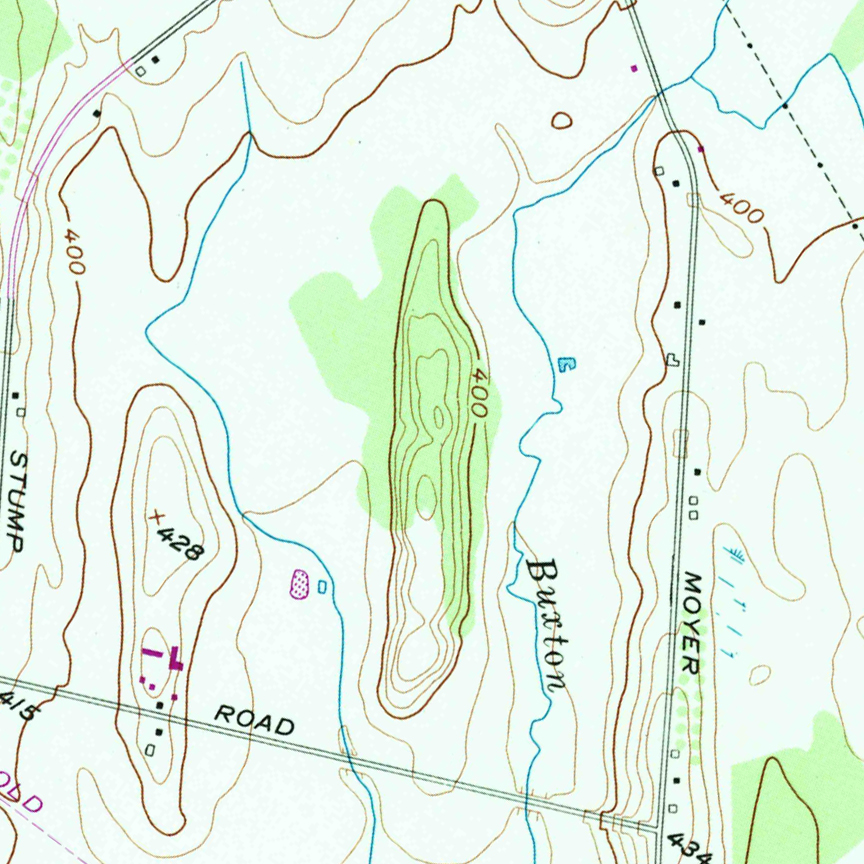“Do you see geology in unexpected places? Do you often find yourself viewing the world through geology-tinted glasses? Do you have any adorable cat pictures that could be used to illustrate geology?” –Evelyn, Accretionary Wedge #57 call for posts
All liquids spilled on a work desk are naturally drawn to electronics and important papers. No counter-arguments allowed, that’s the rule. But don’t you wish your desk had better drainage? Subtle pathways that divert disastrous fluids to safety? With a little imagination, I think my desk would have pretty good drainage.

I see two parallel N-S valleys with drainage to the south. These hopefully abandoned stream beds are separated by a long narrow ridge with an asymmetric profile like a drumlin. Don’t quite see it on the photo above? Click through for a mockup. And why not a drumlin? This is after all Indiana. Or…maybe Upstate New York? Yes, I rather like that. My New York hometown, here at my desk in Indiana. In fact, it takes no time at all to find similar landforms in a USGS 1:24000-scale map.

Although with no elevations for reference, maybe my interpretation is off. Are my drainage pathways in the right spot? Or could those two “valleys” on my desk actually be additional ridges, making this more like a Valley-and-Ridge Province? There’s no way to know for sure, but that’s fine as long as it could make sense.
Creating wood grain landscapes is a fun way to pass the time in waiting rooms…or in your office when your mind goes blank from writing a dissertation. Staring at my desk, which is no longer my desk, but a symbol. A swarm of lines. A wealth of information. The view from a few hundred meters straight up in the air. And in all directions as far as the eye can see, geology is everywhere!
Might I ask you to look into something? I am no expert in geology and related things (and couldn’t tell volcanic from sedimentary minerals if my life depended on it), but around the French town of Saint-Laurent-la-Vernède there is an elongated ellipsoid ridge which for me looks like it might have been created long ago by an meteorite impact at an oblique angle. I gathered some little information here (location, a satellite image from Google Earth of the area and a little bit of description):
http://sovint.blogspot.com/2013/09/an-meteorite-impact-crater-in-saint.html
Now I tried to find information about this area and its geology, but could only come up with diatoms that seem to originate from there. And unfortunately there is no “Geologic features that look like an meteorite impact crater to an layman, but are actually something else” list and you are the only geologist I know. So forgive me if I bother you with such an layman question, but do you know of some list of sorts of known meteorite impacts were you could look this up? Or other resources you could consult? Are there topologic maps of the area one could access?
If you don’t have time for such quests, I fully understand – but if you know were to look, and could spare five minutes to look into this, it would be greatly appreciated.
I am about to head out of the office for a couple of weeks, but will ask around a bit and see if anyone is able to providing you some direction while I am gone. My gut reaction is that it is an erosional feature similar to the Valley and Ridge province I mentioned above, but I am not familiar with the geology of France. A geologic map of the area would be the best place to start. Search around for geology maps of France, and if you get desperate start contacting French geology departments/professors. Unfortunately it looks like the French Geological Survey (http://www.brgm.eu/content/geology) charges for their digital geology maps.